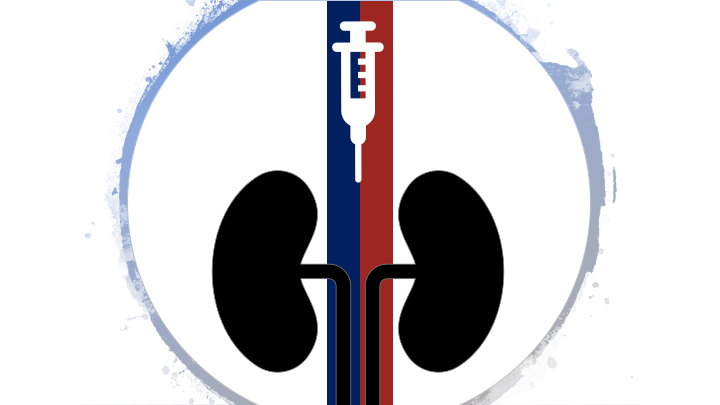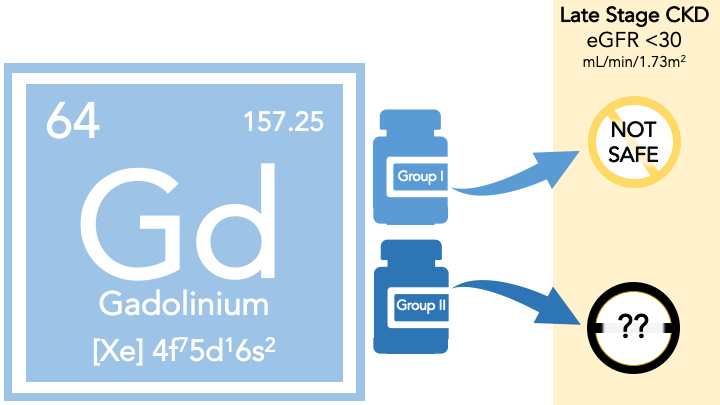How can Ultrasound Elastography be used to diagnose liver fibrosis? 👉
A #TWEETORIAL based on the first-ever @radiology_rsna Research In Practice article -- all images presented are from pubs.rsna.org/doi/10.1148/ra…!
#meded #RadInTraining #radres #futureradres #incomingradres
1/
A #TWEETORIAL based on the first-ever @radiology_rsna Research In Practice article -- all images presented are from pubs.rsna.org/doi/10.1148/ra…!
#meded #RadInTraining #radres #futureradres #incomingradres
1/
Dr. @AileenO_Shea and Dr. Theodore Pierce from @MGHImaging present a case of a patient with known liver steatosis and bridging fibrosis lost to follow-up. Eventually, this patient was diagnosed with cirrhosis after noninvasive investigation with ultrasound elastography.
2/
2/

Which of the following are clinical manifestations of chronic liver disease?
1️⃣ weight loss and jaundice
2️⃣ scleral icterus and rash
3️⃣ transaminitis and thrombocytosis
4️⃣ 1 & 2
5️⃣ all of the above
3/
1️⃣ weight loss and jaundice
2️⃣ scleral icterus and rash
3️⃣ transaminitis and thrombocytosis
4️⃣ 1 & 2
5️⃣ all of the above
3/
Ans: 4️⃣. Weight loss, transaminitis, thrombocytopenia (NOT thrombocytosis), bilirubinemia, and various cutaneous manifestations can occur in the setting of chronic liver disease.
Clinicians may therefore have a high level of suspicion prior to ordering US Elastography.
4/
Clinicians may therefore have a high level of suspicion prior to ordering US Elastography.
4/
The patient had Terry’s nails (white discoloration, absent lunula), which can be seen in chronic liver disease.
This, along with hepatic steatosis (seen here on MRI), mild ALT elevation, and thrombocytopenia were concerning for progression to cirrhosis from prior fibrosis.
5/
This, along with hepatic steatosis (seen here on MRI), mild ALT elevation, and thrombocytopenia were concerning for progression to cirrhosis from prior fibrosis.
5/

METAVIR is a pathologic scoring system for liver fibrosis. Which stage of fibrosis on the METAVIR score is assigned incorrectly?
F0: no fibrosis
F1: few septa
F2: few septa and portal fibrosis
F3: numerous septa without cirrhosis
F4: cirrhosis
6/
F0: no fibrosis
F1: few septa
F2: few septa and portal fibrosis
F3: numerous septa without cirrhosis
F4: cirrhosis
6/
F1: the correct METAVIR staging criteria is portal fibrosis and no septa.
Liver fibrosis occurs due to chronic inflammation that causes proliferation of fibroblasts that begin along the portal tracts and then deposit proteins along fibrotic septa (see my mock-up below!).
7/
Liver fibrosis occurs due to chronic inflammation that causes proliferation of fibroblasts that begin along the portal tracts and then deposit proteins along fibrotic septa (see my mock-up below!).
7/

Early diagnosis of #NAFLD, esp. with at least moderate fibrosis, is crucial to prevent cirrhosis. Which is true regarding liver biopsy?
1️⃣ is not the diagnostic standard for fibrosis
2️⃣ complications are all well-tolerated
3️⃣ is best for diagnosing late stages of fibrosis
8/
1️⃣ is not the diagnostic standard for fibrosis
2️⃣ complications are all well-tolerated
3️⃣ is best for diagnosing late stages of fibrosis
8/

Ans: 3️⃣. Liver biopsy is limited by sampling error with procedure complications that include hemorrhage and, sometimes, hospitalization, but it has best diagnostic performance in late fibrosis.
Meanwhile, US elastography is noninvasive. Multiple available types are shown.
9/
Meanwhile, US elastography is noninvasive. Multiple available types are shown.
9/

In the case patient, 1-D transient elastography showed F1-F2 fibrosis (discordant with clinical findings). Further evaluation was done with 2-D shear-wave elastography (measures stiffness from a quantified shear wave at multiple points as it is propagated perpendicularly).
10/
10/

2D shear-wave diagnosed the patient with F2 or higher fibrosis. Repeat liver biopsy showed cirrhosis. In which case does US elastography have the best diagnostic performance?
1️⃣ high-risk NASH
2️⃣ clinically significant F1 fibrosis
3️⃣ known cirrhosis
4️⃣ if ascites is present
11/
1️⃣ high-risk NASH
2️⃣ clinically significant F1 fibrosis
3️⃣ known cirrhosis
4️⃣ if ascites is present
11/

Ans: 1️⃣. US elastography has the highest diagnostic performance in F2 fibrosis or higher and in high-risk NASH. Ascites may cause technical failure, especially if transient elastography is used.
Here is a schematic of the technique, see the article for additional details.
12/
Here is a schematic of the technique, see the article for additional details.
12/

Magnetic resonance elastography (MRE) uses a similar method of measuring hepatic stiffness as ultrasound elastography.
However, MRE exam times are longer, more susceptible to technical failure, and less widely available. Comparative performance is shown below.
13/
However, MRE exam times are longer, more susceptible to technical failure, and less widely available. Comparative performance is shown below.
13/

Take-Aways:
Developing liver fibrosis in high-risk #NASH patients can be diagnosed early and non-invasively with US elastography, but liver biopsy is ultimately the reference standard.☝️
Different elastography techniques may yield different results! 👍
14/
Developing liver fibrosis in high-risk #NASH patients can be diagnosed early and non-invasively with US elastography, but liver biopsy is ultimately the reference standard.☝️
Different elastography techniques may yield different results! 👍
14/
Check out the full @radiology_rsna paper at pubs.rsna.org/doi/10.1148/ra….
We encourage any thoughts or questions below! Thank you!
#RadInTraining #MedEd #Tweetorial #radres
@RadITrainEditor @RadiologyEditor
15/
We encourage any thoughts or questions below! Thank you!
#RadInTraining #MedEd #Tweetorial #radres
@RadITrainEditor @RadiologyEditor
15/

• • •
Missing some Tweet in this thread? You can try to
force a refresh







